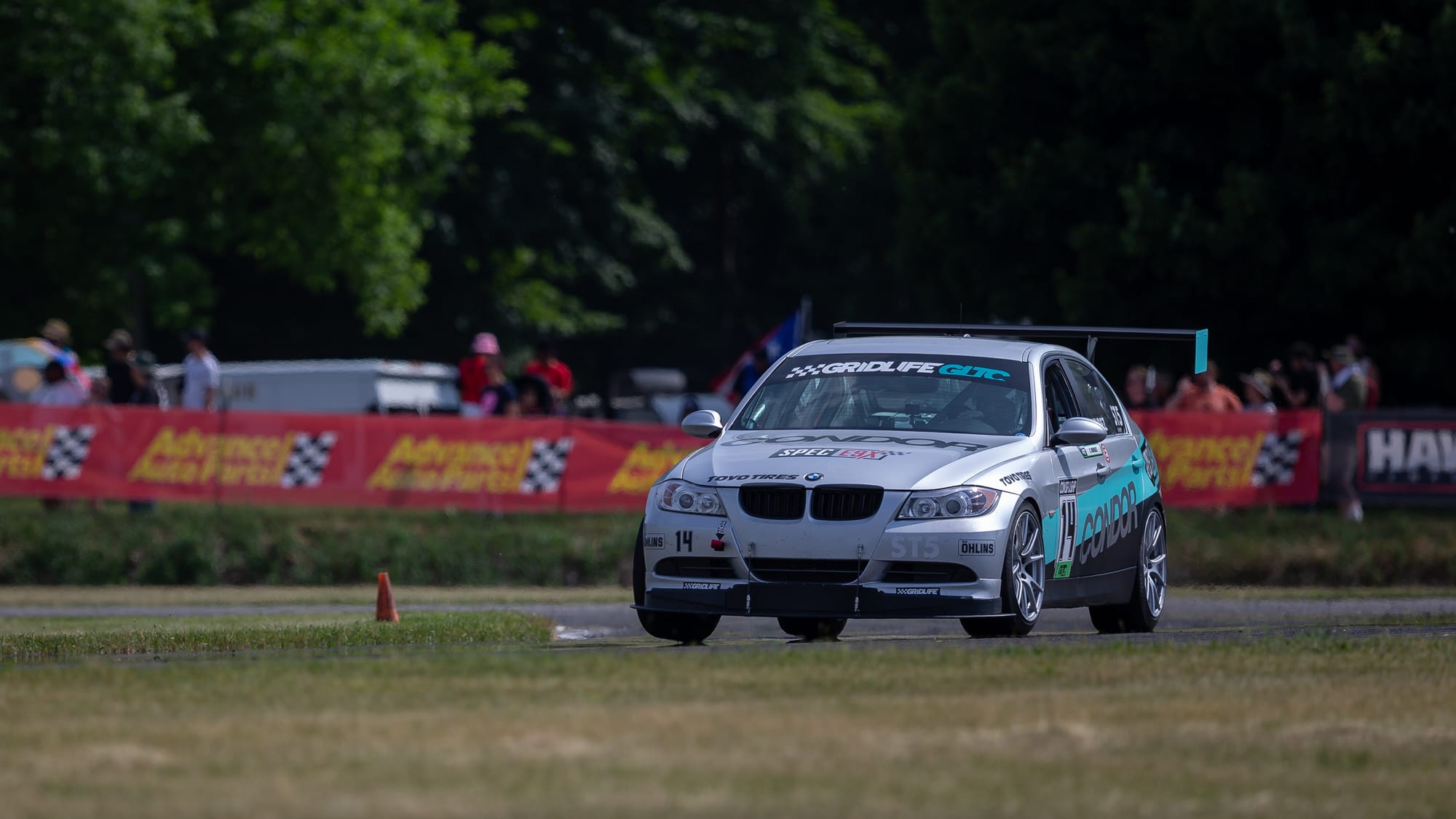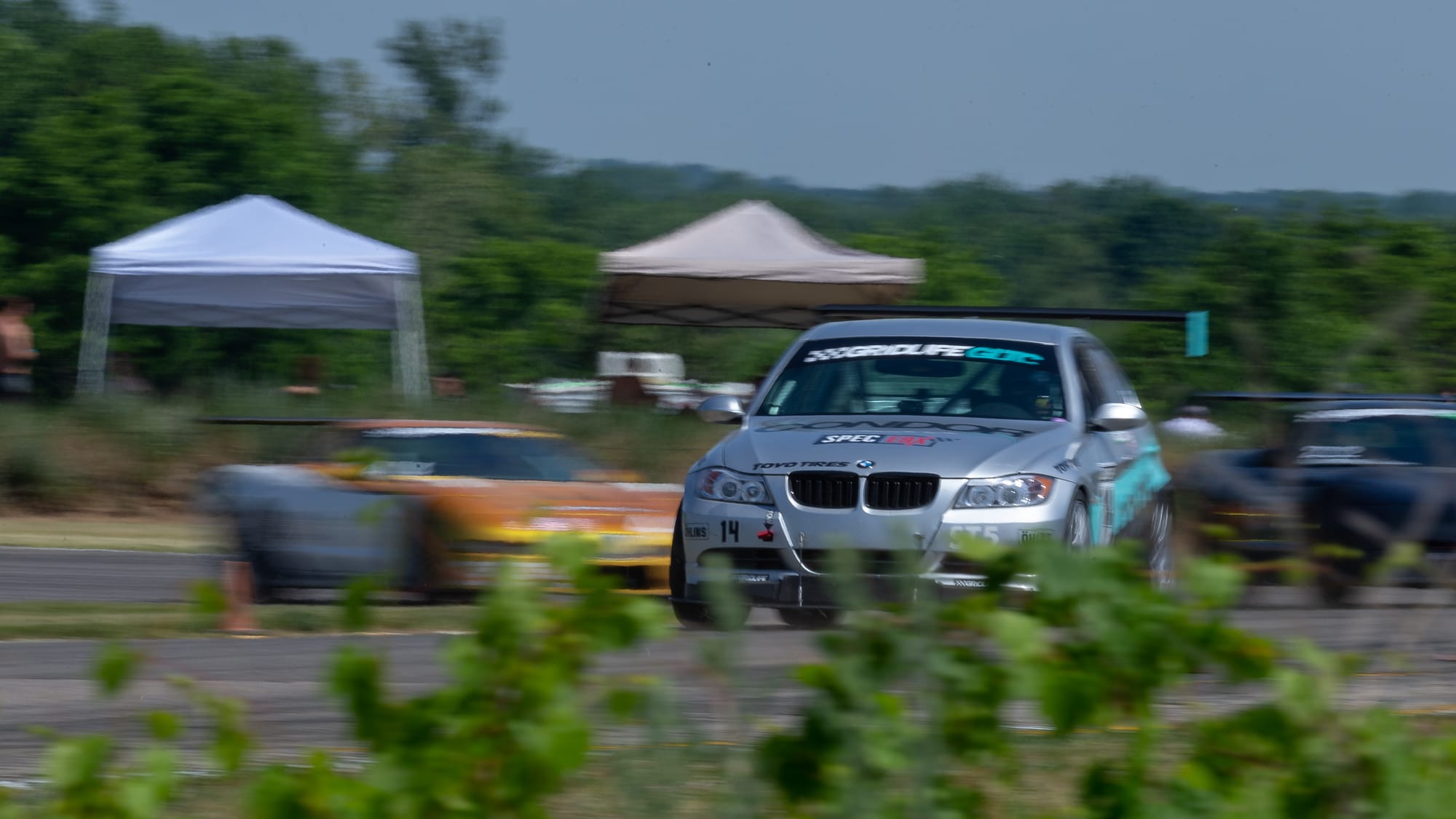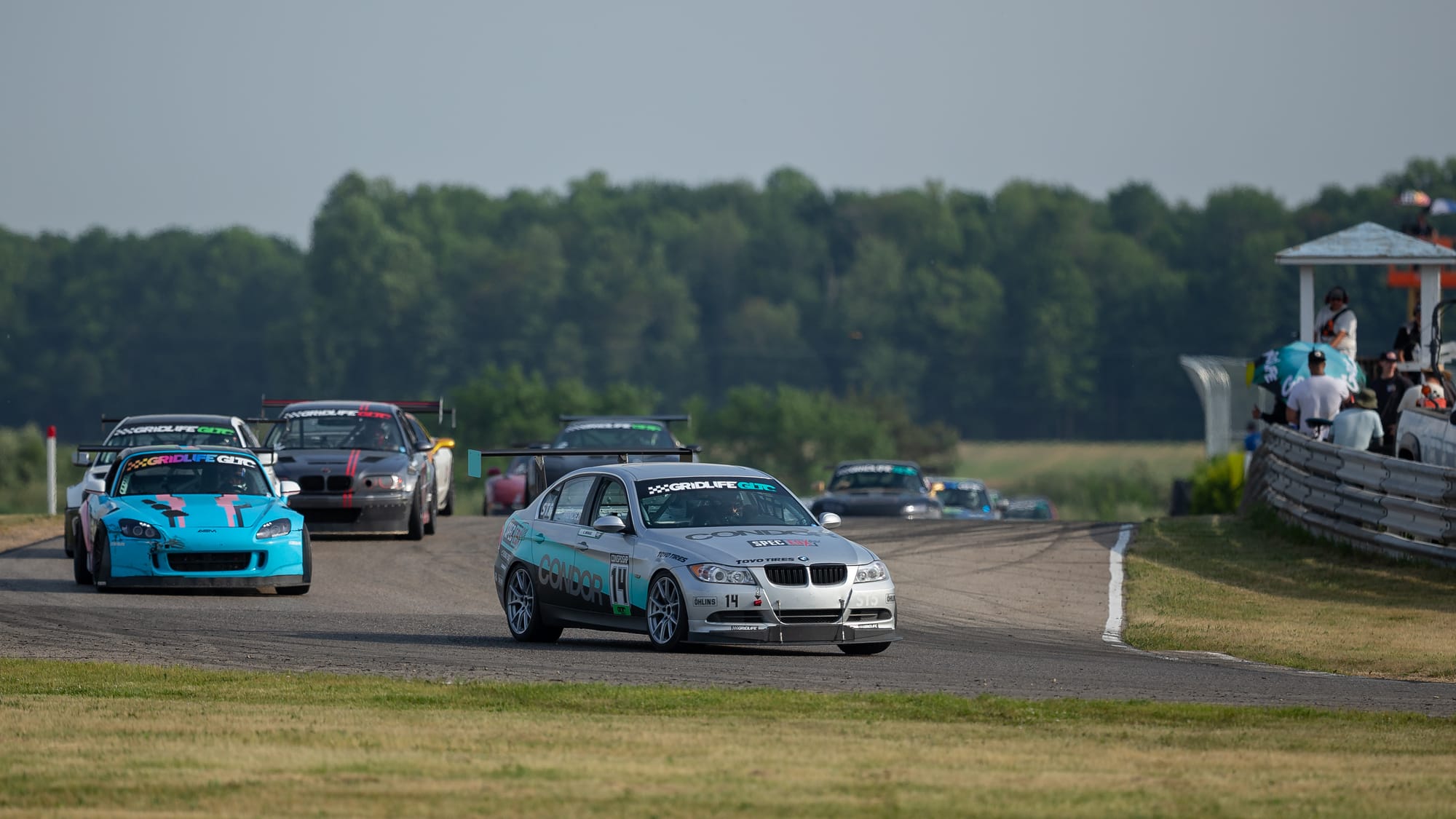Carlos and I have been preparing our E90s for GLTC competition in 2024. We've been patiently waiting for the 2024 rule revisions to come out before we made any significant changes, lest we have to undo them after the rules come out.
Though not yet official, the proposed 2024 rulebook was released a few days ago. It is available here. The 2023 rules are available here. In the '24 proposed rules, all changes are highlighted in red.
Let's explore the new rules from my outsider's perspective.
Penalty Codes
There is a large block of red text towards the top. The entire penalty codes section was rewritten. This section outlines the penalties for any on- or off-track violations, including car contact, compliance failures, and blocking.
The intention is clear: sportsmanship and clean racing are paramount in GLTC. Car contact is unacceptable, and compliance violations or safety/blocking infractions will be harshly penalized.
Penalties include grid spot and finishing position loss, disqualification, probation, license evaluation, and even license expulsion.
As a newcomer, I've always been attracted to the emphasis on "clean" racing in GLTC, and these new rules and clarifications seem to build on that emphasis.
Verdict: I like these changes!

Competition HP
This is an area of the rulebook that seems to change every year in an effort to create the best possible parity. The proposed rules are a large derivation from anything they've done in the past. There are no longer specific mod factors for displacement or even specific engine codes (as in '23). Instead, you have to fit the power-to-weight ratio, including any modifiers granted upon their evaluation of your dyno graph.
Previously, there was a specific penalty for certain engines like the K24 and S54, regardless of how they were tuned or detuned. Now, the engines don't carry a specific penalty. Instead, the power curve is evaluated, and severely detuned engines are penalized the worst. The most extreme penalty is for a large V8 (5L+) "extreme flat detuned," which carries a 9% penalty.
With the 2023 meta being high output engine swaps (S54, K24, LSx) that are detuned ("flat tuned") to make ~210-250whp for an extended range of the powerband, these new rules seem to be squarely aimed at creating better parity for those seemingly dominant drivetrains.
On the surface, this is a fair and reasonable method of achieving parity. Time will tell how it plays out. There are bound to be racers who feel unjustly penalized by this new system since the competition balance will be "judged by a committee of staff and fellow drivers."
There exists the chance of subjectivity and non-uniform judgment of balance. Hopefully, the dyno graphs and competition balance judgments will be publically visible so comparisons can be made.
Verdict: TBD, but it will likely be a good change.

Aero and Suspension
Not much has changed here. The combined modifier for a 3" splitter and a wing has been bumped up +1%: 4% for a splitter/medium wing, and 5% for a splitter/large wing.
Dampers are limited to 3 valving adjustments per corner. Shock potentiometers and ride height sensors are prohibited.
Verdict: Not large changes. They make sense, given the rest of the rules.
Tire Allowance and Size Changes
The allowed tires were not changed except for the additional allowance of Maxxis 200+ treadwear tires. This is probably aimed at the VR-1; a good but not great tire (based on what I've read).
The tire width categories were expanded and tweaked. Categories for 265, 285, and 315 tires were added to the mix. Cars above 3,301lbs might have been penalized by 10mm in tire width. I believe there are one or two front-running Corvettes that will be close to being able to run 315mm tires (above 3,576 lbs) now.
While probably not of large consequence to the overall speed or balance of the class, I think that the max tire sizes are difficult to achieve on cars running "stock" bodywork. At least in the BMW world, most of the common GLTC chassis (E36, E46, E9X) would not easily be able to fit the max tire size for their "natural" weight.
E36s can only fit about a 255, but they will likely be in the 275 width category. Same with E46 non-M. E9X non-M will likely be close to 285 category, but 265/275 tires are already a tight fit.
Balance-wise, the categories seem fair, but I'd rather see the categories get moved back a size or two so competitors aren't forced to run overfenders or widebody to extract the most grip from their chassis.
Verdict: It is good to have options, but tire sizes are unreasonably large.

Points System, A/B Races
2024 is going to carry more Gridlife events than ever. However, only your top 14 regular season finishes and the points from the championship/final event (at PittRace) will be considered in calculating season points.
Since there are four races a weekend, you'd need to attend four events + the finals in order to fulfill all of the points opportunities for the season. If you did four regular season events, you'd have 2 "throw-away" races. If you did more events, you would have more throw-aways, potentially improving your standings.
The Lime Rock Park event in 2023 was the first time that GLTC ran "A/B" races. That means the race group was split into two races, A being the fastest and B being the rest. This was due to many racer entries on the relatively small track.
The A/B races were a hit with the spectators and the racers alike. As the series continues to grow, they may choose to do more of these. As such, they have outlined in great detail how the A/B races work in the new rulebook.
The entries are roughly split in half, with the fastest bunch going into group A for Race 1. Race 2 allows the top 5 racers from the B race to bump up into A, and the bottom 5 A racers move down to B, with the grids for each race being set by the fastest lap times in Race 1. Race 3 is the same, except the grids are set by finishing position from Race 2. Race 4 will have no promotion or relegation.
You can score minor points (the same as qualifying points) by finishing on the podium in the B race, so there is still good incentive and much more visibility to winning the B race instead of being towards the back of the A race.
Verdict: Love all of these changes.
Rewards Weight
Rewards weight has been simplified and reduced dramatically. Rewards weight used to be accrued during qualifying and within a race weekend and then reset when that weekend ended. Up to 9% rewards weight could be accrued in a weekend, but you'd go back to 0% for the next event.
The proposed change is that once you accrue rewards weight, you carry it for the rest of the season. It resets back to 0% only for the championship/finals round at PittRace. The max rewards weight is now only 3%. Only multiple race winners will accrue rewards weight. You get two wins for "free," the third gives you 1%, the fourth 2%, and the fifth 3%.
Verdict: Carrying the weight through the season makes sense. Not as many racers are going to accrue weight, though. Not sure how well this balances out.
Other/Misc
Dyno procedures require the car to be cooled off for 15 minutes after a race.
Blowing the dyno will have different consequences depending on how much over power you were. 1-3hp over will result in losing 10 positions from the previous race. 3.x-5hp over will result in losing all points from the previous race, and starting the next race with 15 positions docked. 5.x+ over will result in disqualification and starting the next race from the back of the field.
Fire suppression systems are now mandatory (and they always should have been!).
Summary
I'm happy with the proposed changes overall. It is clear that GLTC and Gridlife are attracting more attention and more racers than ever before. Adam and his team are doing a good job of balancing the level of competition while remaining appealing to newcomers.
Learn more at grid.life.









